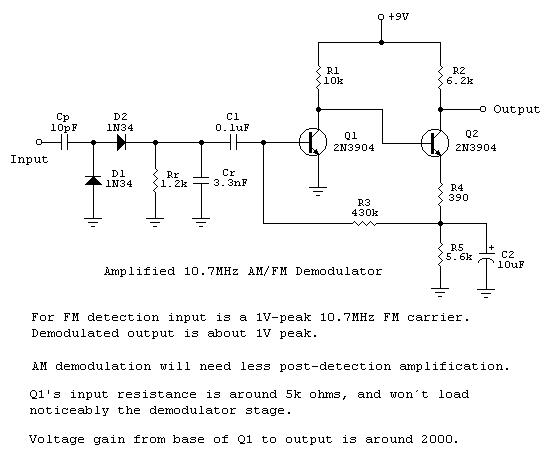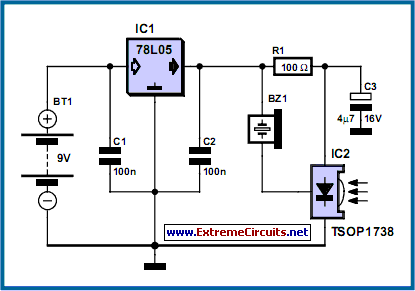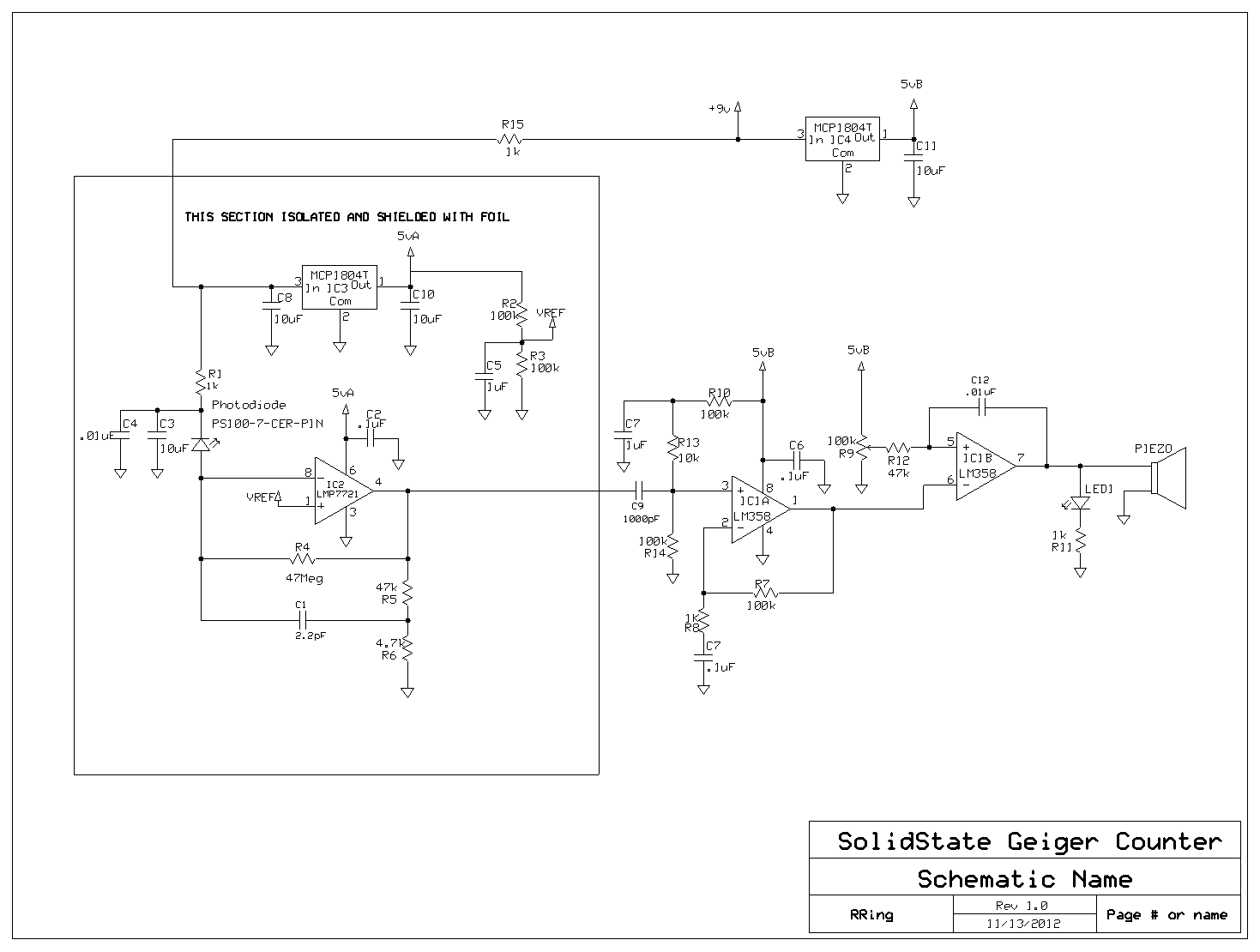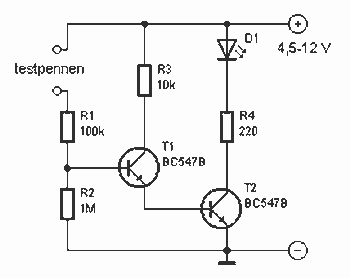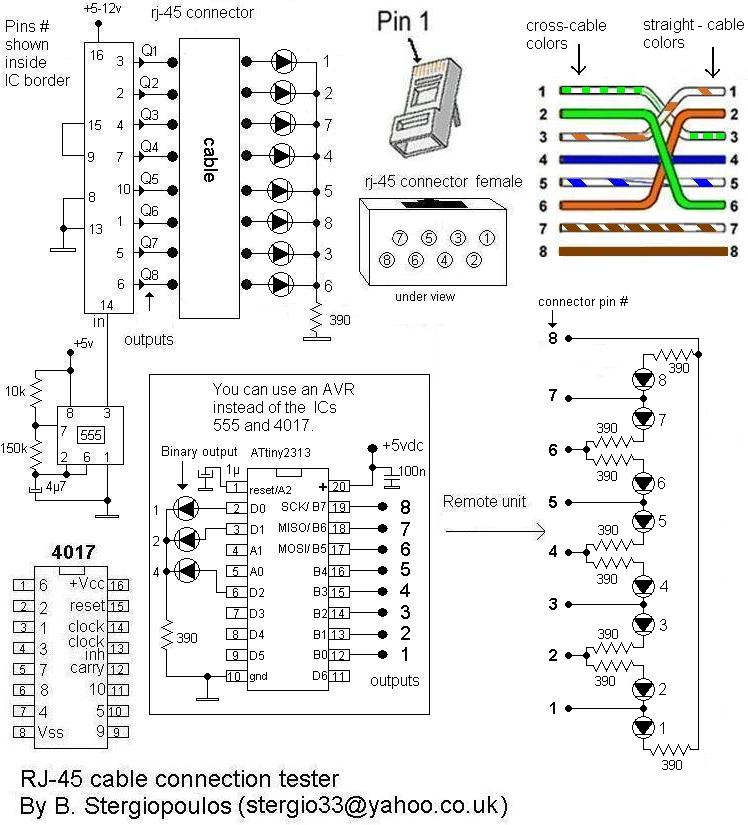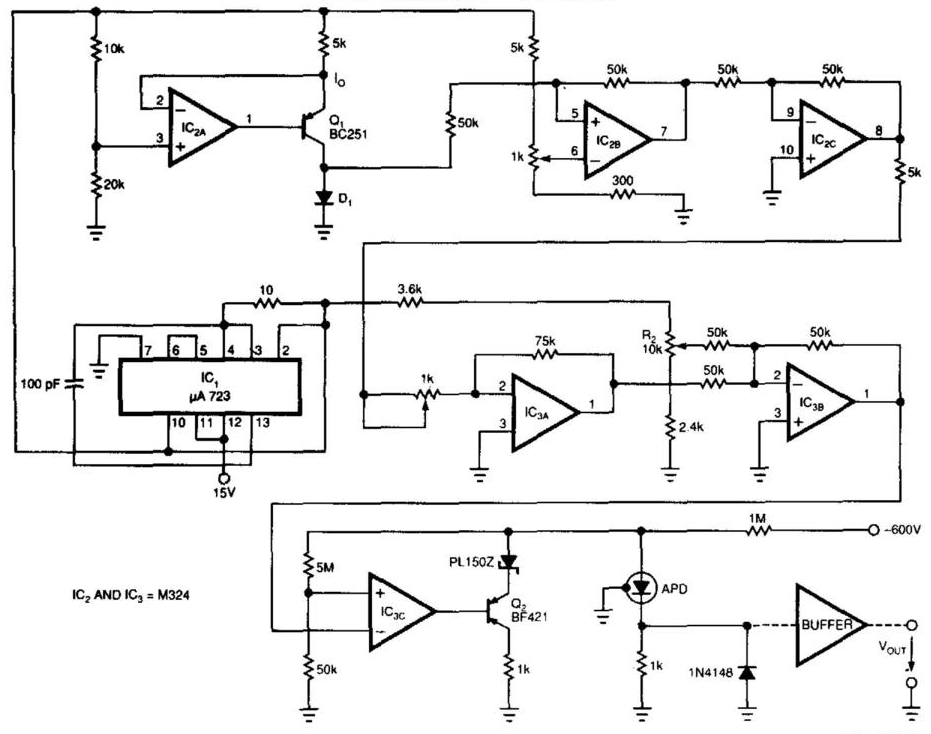
Go no-go diode tester
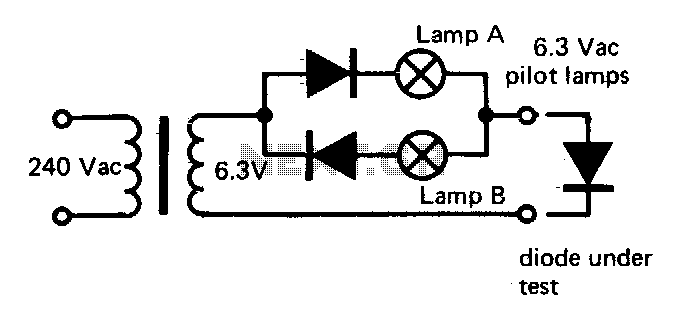
If lamp A or B is illuminated, the diode is functional. If both lamps are illuminated, the diode is short-circuited. If neither lamp lights up, the diode is an open circuit.
The described circuit utilizes two indicator lamps, designated as lamp A and lamp B, to provide a visual indication of the operational status of a diode within the circuit. The functionality of the diode is assessed based on the state of these lamps.
When lamp A or lamp B is illuminated, it indicates that the diode is in a serviceable condition, allowing current to flow as intended. This situation suggests that the diode is not faulty and is effectively conducting current in the forward direction.
Conversely, if both lamps are illuminated simultaneously, this indicates a short circuit condition across the diode. In this scenario, the diode fails to restrict current flow, leading to a situation where both lamps receive power, which is not typical in a properly functioning circuit.
Lastly, if neither lamp A nor lamp B lights up, it signifies that the diode is in an open circuit state. This condition implies that there is no current flowing through the diode, rendering it non-functional. Consequently, this lack of illumination from both lamps serves as a clear indication of a diode failure.
This circuit can be effectively implemented using a simple series arrangement where the diode is placed in line with a power source and the two indicator lamps. Resistors may also be included to limit the current flowing through the lamps, ensuring they operate within safe limits. The arrangement allows for a straightforward diagnostic tool to assess diode integrity in various electronic applications.If lamp A or B is illuminated, the diode is serviceable. If both light, the diode is short circuited If neither light, ndiode is an open circuit. 🔗 External reference
The described circuit utilizes two indicator lamps, designated as lamp A and lamp B, to provide a visual indication of the operational status of a diode within the circuit. The functionality of the diode is assessed based on the state of these lamps.
When lamp A or lamp B is illuminated, it indicates that the diode is in a serviceable condition, allowing current to flow as intended. This situation suggests that the diode is not faulty and is effectively conducting current in the forward direction.
Conversely, if both lamps are illuminated simultaneously, this indicates a short circuit condition across the diode. In this scenario, the diode fails to restrict current flow, leading to a situation where both lamps receive power, which is not typical in a properly functioning circuit.
Lastly, if neither lamp A nor lamp B lights up, it signifies that the diode is in an open circuit state. This condition implies that there is no current flowing through the diode, rendering it non-functional. Consequently, this lack of illumination from both lamps serves as a clear indication of a diode failure.
This circuit can be effectively implemented using a simple series arrangement where the diode is placed in line with a power source and the two indicator lamps. Resistors may also be included to limit the current flowing through the lamps, ensuring they operate within safe limits. The arrangement allows for a straightforward diagnostic tool to assess diode integrity in various electronic applications.If lamp A or B is illuminated, the diode is serviceable. If both light, the diode is short circuited If neither light, ndiode is an open circuit. 🔗 External reference
Warning: include(partials/cookie-banner.php): Failed to open stream: Permission denied in /var/www/html/nextgr/view-circuit.php on line 713
Warning: include(): Failed opening 'partials/cookie-banner.php' for inclusion (include_path='.:/usr/share/php') in /var/www/html/nextgr/view-circuit.php on line 713
